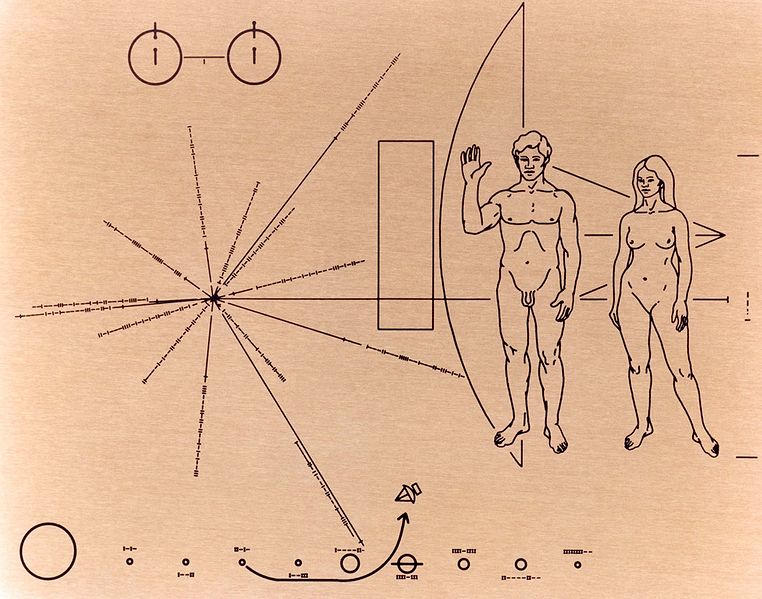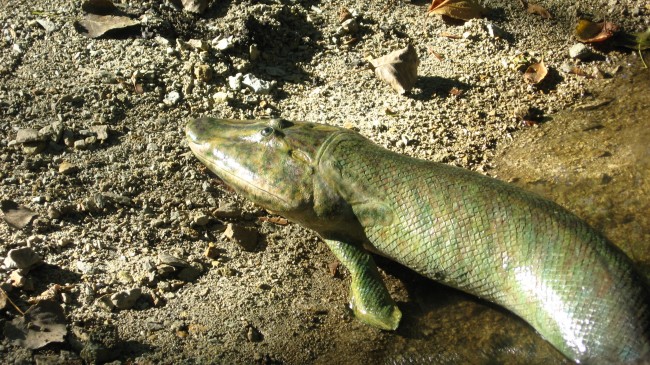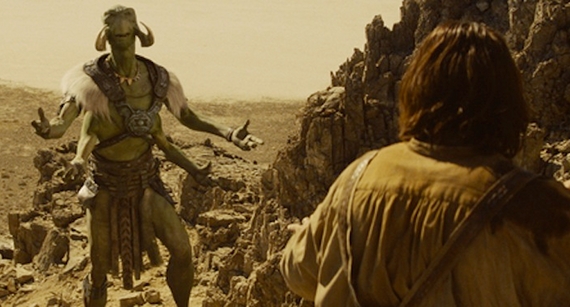Life's Little Mysteries: What if ... ?
Posted: Sat Aug 06, 2011 2:49 pm
Life's Little Mysteries | Adam Hadhazy | 2011 May 11-24
Part 1: What if ... Neanderthals had not gone extinct?
Part 2: What if ... a giant asteroid had not killed off the dinosaurs?
Part 3: What if ... the supercontinent Pangaea never broke up?
Part 4: What if ... there were more than two sexes?
Part 5: What if ... the first animals to crawl out of the ocean had six limbs instead of four?
Part 6: What if ... the moon had never formed?
Part 7: What if ... Earth were twice as big?
Part 8: What if ... the sun were half as massive?
Part 9: What if ... the forces that form molecules were stronger or weaker?
Part 10: What if . . . the solar system had formed closer to the Milky Way's edge?
- Life's Little Mysteries presents a 10-part series that examines what would happen if a major event in the history of the universe had gone just slightly differently.
Part 1: What if ... Neanderthals had not gone extinct?
Neanderthals were a species of the human genus that lived in Europe and western Asia spanning a period some 130,000 to 30,000 years ago. The stereotypical "caveman," at least in appearance, Neanderthals had prominent brow ridges and sloping foreheads, as well as shorter legs and broader shoulders. Theories of their demise point to Homo sapiens (us) outcompeting them for food and territory as the last ice age set in, which sealed the Neanderthals' fate.
Life would be: A bit more like a Geico commercial? Neanderthals could have persisted in pockets in Europe even until modern times, and it's possible they would have the capacity to think, speak and act much like us.
But it's far more likely that Neanderthals, even if they had made it through the last ice age, would have been "assimilated or killed off," said Will Harcourt-Smith, a professor at the City University of New York and a paleoanthropologist at the American Museum of Natural History.
Recent genetic analyses have shown that modern Eurasians have 1 to 4 percent Neanderthal DNA in their genome, indicating that the two species could, and did, interbreed. Neanderthals had a much smaller initial population than Homo sapiens, so, unless Neanderthals kept strictly to themselves, humans would have bred them out of existence probably before the need for car insurance ever arose. If that had ended up being the case, more of our DNA would bear the Neanderthal imprint, and maybe — just maybe — some physical traits would remain as well.
Part 2: What if ... a giant asteroid had not killed off the dinosaurs?
Other factors were involved in dinosaurs' extinction, but the resounding death knell was the impact of a 6-mile-wide asteroid in present-day Mexico's Yucatan Peninsula 65 million years ago, creating what is known as the 110-mile-wide, 6-mile-deep Chicxulub crater. The event unleashed mega-tsunamis, planetwide wildfires and kicked up enough dust and debris to block the sun and cause a period of global cooling, which killed off many plants.
Life would be: Still dinosauric in all likelihood, assuming no other catastrophic, extinction-level events transpired. After all, dinos had a good long run of dominance on land for 160 million years prior, and if that continued, primates like us would not be around, said Damian Nance, a professor of geosciences at Ohio University. Mammals did co-evolve alongside dinosaurs, but they occupied fringe ecological niches and grew no larger than rodents in most cases.
Only with dinosaur plant-devourers gone would there be enough food for mammals to seize the day and eventually give rise to us (knocking out the predators that would eat mammals helped, too). Researchers have speculated that intelligent "dinosauroids" might have evolved in humanity's place, based on the relatively large brain size of late-emerging trodontid species, which were bird-like predators.
Of course, some of those dinosaurs that have survived into modern day — becoming birds — are quite smart, but not smart enough to have ended up on the other side of the insult "bird-brained."
Part 3: What if ... the supercontinent Pangaea never broke up?
From about 300 million to 200 million years ago, all seven modern continents were mashed together as one landmass, dubbed Pangaea. The continents have since "drifted" apart because of the movements of the Earth's crust, known as plate tectonics. Some continents have maintained their puzzle piece-like shapes: Look at how eastern South America tucks into western Africa.
Life would be: Far less diverse. A prime driver of speciation — the development of new species from existing ones — is geographical isolation, which leads to the evolution of new traits by subjecting creatures to different selective pressures. Consider, for example, the large island of Madagascar, which broke off from Gondwana, Pangaea's southern half, 160 million years ago. About nine out of 10 of the plant and mammal species that have evolved on the island are not found anywhere else on the planet, according to Conservation International.
A locked-in Pangaea further constrains life's possibilities because much of its interior would be arid and hot, said Damian Nance, a professor of geosciences at Ohio University. "Because of Pangaea's size, moisture-bearing clouds would lose most of their moisture before getting very far inland," Nance told Life's Little Mysteries.
Excess mass on a spinning globe shifts away from the poles, so the supercontinent would also become centered on the equator, the warmest part of the planet. Reptiles could deal with such a climate better than most, which is partly why dinosaurs, which emerged during the time the planet's surface was one giant chunk, thrived before mammals.
Part 4: What if ... there were more than two sexes?
The need for a third sex cell and therefore a third body type in order to produce offspring (and inspire a third restroom symbol) has never evolved on Earth. Such an arrangement would be inefficient and biologically costly. But nature does have multiple examples of more than two "mating types" within a species; clam shrimp have a male as well as two varieties of hermaphrodite, which either self-fertilize or mate with males but cannot mate with each other.
Not be outdone, the protozoan Tetrahymena thermophila has seven distinct "sexes" that can hook up and swap genes.
The stark male/female split in many organisms has long puzzled biologists. After all, having three mating types – wherein individuals can mate with the two types other than its own – boosts the odds of scoring a compatible partner from one in two to two in three, or from 50 percent to 67 percent; and the more varieties, the higher the odds. For stationary creatures, where finding a mate is difficult, multiple mating types have the advantage, said Laurence Hurst, a professor of evolutionary genetics at the University of Bath. For example, mushrooms have more than 30,000 mating types, Hurst told Life's Little Mysteries.
As for us mobile, social humans, finding a partner is not so tough (supposedly). Having three or more "genders," then, any two of which could make viable offspring (naturally), might be a reproductive blessing, but it could also be a relationship curse.
Part 5: What if ... the first animals to crawl out of the ocean had six limbs instead of four?
All land vertebrates – mammals, birds, reptiles and amphibians – are or were tetrapods, which have two sets of paired limbs. (Snakes evolved from four-limbed lizards.) This shared body plan dates back to the late Devonian period, about 400 million years ago, when lobe-finned fish began exploiting new ecological niches in wetlands and eventually made the transition to terra firma.
Life would be: Quite likely in need of more pant legs and sleeves, at least if the descendent creatures were of the clothes-wearing variety.
Although paired upper and lower fins developed in bony fish, the precursors to tetrapods, there is not a lot of evidence that this anatomy was selected over, say, three pairs or four pairs for any evolutionarily reason. "You could consider it somewhat arbitrary," said Edward Daeschler, associate curator at the Academy of Natural Sciences in Philadelphia. Land vertebrates “all share the same basic design, but could it be different? Absolutely."
Creatures with more than four limbs have not evolved in land species. In fact the trend is to simplify, as with snakes, which lost their limbs, and horses, which instead of having five digits have one (a hoof). Six, eight and even leggier arthropods (insects, arachnids and crustaceans) have, of course, been extraordinarily successful – six-limbed beetles alone comprise a quarter of the 1.7 million described species. But the fact that these creatures have exoskeletons rather than bones inside their bodies limits their size, Daeschler told Life's Little Mysteries.
Large exoskeletons needed to support internal body tissue would be prohibitively cumbersome and heavy, plus would demand lots of energy to move and grow. Because intelligence is strongly linked to how big, intricate and energy-consuming an animal's brain is, that sentience is unlikely to evolve in bugs.
Part 6: What if ... the moon had never formed?
Scientists think material gouged out by a titanic collision between the freshly formed Earth and a Mars-size celestial body some 4.5 billion years ago coalesced to form the moon.
Life would be: Migratory and on shorter day-night cycles, if existent at all. Huge tides generated by the moon – which orbited much closer to Earth when it formed – washed the chemical building blocks for life from land into the oceans and helped "stir up the primordial soup," said Neil Comins, a professor of physics at the University of Maine.
The moon's gravity has helped slow Earth's rotation from an initial six-hour day to our current 24-hour day, while also stabilizing the tilt of our planet's axis, and thereby moderating the seasons. Life forms on a moonless Earth would therefore have different patterns of activity per the short days and nights, Comins told Life's Little Mysteries. These creatures might need to migrate more frequently to cope with extreme climate swings as well.
The absence of the moon would affect life in less profound ways, too: No moon might mean no space race, which probably means no Tempur-Pedic mattresses or freeze-dried ice cream.
Part 7: What if ... Earth were twice as big?
If Earth's diameter were doubled to about 16,000 miles, the planet's mass would increase eight times, and the force of gravity on the planet would be twice as strong.
Life would be: Built and proportioned differently.
If gravity were twice as strong, bodies possessing the same construction and mass as our flora and fauna would weigh twice as much and would collapse. It'd be "timber!" for tall, thick trees such as redwoods. Large, sunward-reaching plants might still develop, but would require stiffer architectures of cellulose fibers or another material altogether.
Animals would have to be thicker-legged to support their weight. As for humans, our appearance would depend on the evolutionary demands placed on our biological forebears in a higher-gravity world, said Neil Comins, a professor of physics at the University of Maine. "If our ancestors had to run fast and fight hard, then we would be burly, but if not, we could be thin and light," Comins told Life's Little Mysteries.
Part 8: What if ... the sun were half as massive?
The sun's temperature, color and diameter are determined by its mass. Bigger stars are hotter and bluer than the whitish-yellow sun, while smaller stars are cooler and redder.
Life would be: Nonexistent, at least as we know it.
Red dwarf stars are reckoned to have a tighter "habitable zone," the band around a star within which liquid water can flow on a planet's surface. Earth is in our sun's habitable zone, for example; Venus is probably too close, although Mars is right on this band's outer edge.
In the half-mass sun scenario, the habitable zone would shift closer to the star; if the Earth orbited at the same distance, our water would freeze solid. Planets in a Mercury-size orbit, about two-thirds closer than Earth to this hypothetical crimson sun, would be sitting pretty instead.
Just how habitable a red dwarf's habitable zone might be is debatable. Smaller stars produce more frequent blasts of radiation called flares, which would bombard close-in planets. These worlds might also become tidally locked to the sun — as our moon is to Earth — and constantly present one hot hemisphere to the star, with the other permanently dark.
But if life did find a way, plants, for example, would probably look black to our eyes, soaking up as much light as possible from their dim red star to power photosynthesis, Neil Comins, a professor of physics at the University of Maine, told Life's Little Mysteries. Most Earthly plants reflect, and thereby forego, a significant portion of green light.
Part 9: What if ... the forces that form molecules were stronger or weaker?
Complex molecules are created thanks to bonds that form between one atom's positively charged protons in its nucleus and another atom's negatively charged electrons. Atoms "share" electrons, and the protons' mutual attraction to the electrons and vice versa overcomes like-charge repulsions.
Life would be: Nonexistent, or with radically altered chemistries.
Mess with the fundamental values of electromagnetism, described above, and chemistry as we know it goes out the window. "The proton and electron balance each other perfectly — change that a little, and you have a very different universe," Jon Friedrich, a professor of chemistry at Fordham University, told Life's Little Mysteries.
Suppose the attraction between protons and electrons were greater, for example, such that the two particles, if freely existing, would combine. One would get nothing more than neutral neutrons, which have a mass that's a bit greater than that of a mashed-together proton and neutron, after the Big Bang.
Neutrons, being an uncharged particle, wouldn't lend themselves to any interesting chemistry (although in our universe, free-floating neutrons decay into a proton and an electron, plus another subatomic particle). Make the proton-electron attraction weaker and intricate chemical bonds between atoms would not occur, which means no giant biomolecules such as DNA.
Part 10: What if . . . the solar system had formed closer to the Milky Way's edge?
Our solar system is located about two-thirds of the way out from the galactic center. Further toward the Milky Way's edge, "metallicity" – the percentage of elements heavier than the two lightest and most common, the gases hydrogen and helium – generally decreases. Heavier elements are the raw material for forming rocky bodies such as planets.
Life would be: Surprisingly, probably much the same — if it ever arose in the first place, that is.
Rocky Earth-like worlds should still develop in the Milky Way's outer rim, even though there is roughly one-third the amount of metallic elements as found in our sun's vicinity, said John Johnson, a professor of astronomy at the California Institute of Technology. These elements, however, comprise a small portion (about 1 percent) of the total starting stock for our solar system. So having two-thirds less would not translate into, say, insufficient calcium for organisms to build internal bones or shells — there would still be enough to go around.
But lower metallicity would spell doom for creating gas giants like Jupiter. These bodies are thought to begin as rocky cores. Through accretion of dust, then rocks, then boulders, and so on, they grow piecemeal to at least ten times the mass of Earth. The big planet's gravity traps stray gases, plumping up a massive atmosphere, generating stronger gravity yet. With fewer solid particles around, however, these cores take too long to form before available gases are scattered or drawn in by the fledgling solar system's star. [Why Does Saturn Have Rings?]
In turn, the lack of an outer Jupiter-size planet could have profound effects on the habitability of inner rocky worlds. Jupiter has played the role of Earth's big brother, protecting us from bullies while also hitting us with the occasional spitball. Jupiter has shielded Earth from excessive, potentially life-killing impacts from distant comets. But computer simulations suggest Jupiter nudged some ice-containing asteroids from the mid-solar system Earth's way, delivering much of the water that became our oceans. Life as we know it, of course, needs water.
At any rate, for a twin Earth in the Milky Way's far reaches, "civilizations that form there would look up and see less wanderers," Johnson told Life's Little Mysteries. The word "planet" comes from the Greek for "wandering star," and the ancients saw distant Jupiter and Saturn shining in the night sky only because the worlds are so large.













